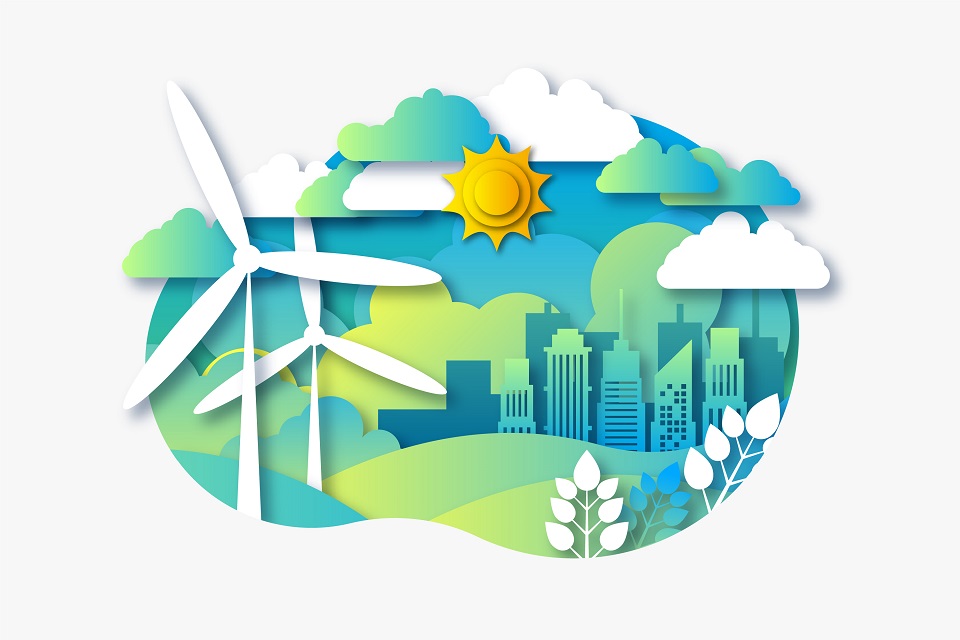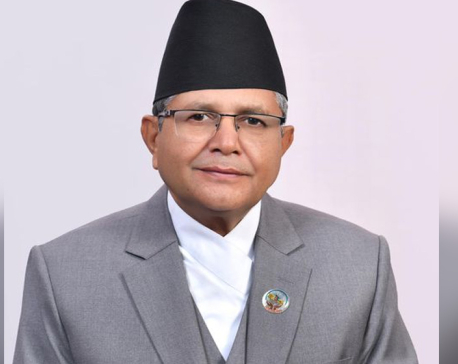
OR
Opinion
The Green Economy: A Win-Win for People and the Planet
Published On: November 30, 2023 09:00 AM NPT By: Basu Gautam


Basu Gautam
The author is the President and Founder of Lumbini World Peace Forum, as well as an activist in 1 Million Trees Plantation Drive in Nepal.news@myrepublica.com
More from Author
- The Green Economy: A Win-Win for People and the Planet
- Greening Our Path to Peace: The Link between Environment, Peace, and CSR
- Price of Progress: The Balance between Growth and Sustainability
- Ecological Principles and the Climate Crisis in Buddhism
- Living Sustainably to Ensure a Future of Sustainability
The term "green economy" refers to an economic framework that aims to reduce environmental threats and ecological scarcity while improving social justice and human welfare. The use of clean and renewable energy sources, resource efficiency, and sustainable and responsible production and consumption methods are often used to explain this. To address the problems of resource depletion, biodiversity loss, and climate change, the green economy aims to incorporate social and environmental factors into economic decision-making.
The main characteristics of the green economy include a holistic approach to sustainable development. Renewable energy sources such as solar, wind, hydropower and geothermal energy play a central role in reducing dependence on fossil fuels and curbing greenhouse gas emissions. Resource efficiency is the guiding principle of the green economy which advocates practices such as recycling, waste reduction and sustainable resource management to minimize the impact on the environment. Sustainable agriculture advocates farming practices that are not only environmentally friendly, but also prioritize biodiversity and minimize the use of harmful chemicals. The green economy emphasizes innovation and promotes the development and implementation of environmentally-friendly technologies that contribute to sustainability and resource conservation. Adopting a circular economy model helps us move away from the linear approach of 'take, make and dispose’ and encourages recycling, reuse and waste reduction. Biodiversity conservation is of paramount importance, and ecosystem protection and restoration is necessary to protect diverse flora and fauna and maintain important ecosystem services. The green economy also emphasizes social inclusion, focusing on considerations such as job creation and community well-being, and ensuring that the benefits are distributed equitably.
Foundations of Green Economy
Three key components of the green economy are resource efficiency, sustainable production and consumption methods, and the utilization of clean and renewable energy sources. The green economy is a paradigm shift centered on these three factors. Fossil fuels are replaced with clean, renewable energy sources including geothermal, hydropower, wind, and solar power in the green economy. These sources lessen climate change and our reliance on finite resources. Reducing trash, recycling, and reusing are given priority in a circular strategy that emphasizes resource efficiency. Sustainable production and consumption methods put social and environmental responsibility first, concentrating on reducing their negative effects on the environment and implementing eco-friendly technology. Sustainable practices and clean, renewable energy sources have a mutually beneficial relationship because of the interconnectedness of these ideals. The green economy affects society locally and globally, enabling countries to fight climate change and advance sustainable development. But there are obstacles, such as changes in economic conditions, governmental changes, and infrastructure and technology advancements.
Innovation and Eco-Friendly Technologies: Pioneering the Green Revolution
Innovation is a key component of the green economy that propels the shift to a sustainable future. It propels the development of new technologies and cultivates an eco-friendly solution-focused attitude. Change is sparked by innovation, which is what propels the development of waste management systems, renewable energy sources, and sustainable farming methods. The world is becoming more resource-conscious as a result of smart technologies like data analytics, artificial intelligence, and Internet of Things devices that optimize resource consumption across industries. Additionally, innovation encourages a circular economy by making material recycling and reuse easier. Sustainable transportation and e-mobility are revolutionary changes that lessen dependency on fossil fuel and lessen environmental impact.
The convergence of intelligent technologies, including data analytics, artificial intelligence (AI), and the Internet of Things (IoT), is transforming resource preservation and advancing a more sustainable global community. These technologies improve energy efficiency through smart grids, redefine farming techniques through precision agriculture, encourage water conservation through intelligent water management systems, and provide real-time data collecting and control over resource consumption. Additionally, the manufacturing industry is implementing smart production techniques that put resource efficiency first, reducing energy use and material waste. Industries can make educated decisions quickly, maximizing resource use and reduce environmental impact, thanks to real-time monitoring and decision-making capabilities. But there are issues that need to be resolved, such as data security, infrastructure spending, and technology standards. Industry, government, and technology suppliers working together may overcome these obstacles and build a strong foundation for resource conservation. A major step in creating a resource-conscious society is the integration of smart technologies, which have the potential to have a broad influence on efficiency, sustainability, and environmental preservation.
Global Initiatives for Renewable Energy Access
In the pursuit of a sustainable and equitable global future, the spotlight intensifies on the imperative of renewable energy access. As nations grapple with the dual challenge of meeting energy demands while mitigating the environmental impact, the concept of a green economy propels the discourse toward cleaner and more sustainable alternatives.
At the heart of the global transition to a green economy is a clear commitment to closing the energy gap, an important initiative with strong traction in developing countries, including Nepal. This aspect of sustainable development recognizes the continuing challenges faced by many countries in providing stable and affordable energy for all their citizens. In the shadow of traditional energy constraints, marginalized communities suffer from access restrictions that not only impede their daily lives but also hinder broader socio-economic progress.
Efforts to close this energy gap are the cornerstone of international cooperation and programs to promote renewable energy technologies. The focus is not only on introducing new energy sources, but also on building sustainable and reliable energy infrastructure that strengthens communities at the grassroots level.
For Nepal, a country rich in natural resources, this initiative has transformative significance and has the potential to lift entire communities out of energy poverty.
The necessity of access to renewable energy is becoming increasingly important in the quest for a just and sustainable future for all people on Earth. With countries struggling to both fulfill their energy needs and reduce their environmental effect, the idea of a "green economy" is driving the conversation in the direction of more sustainable and clean options. Closing the energy gap is a key project that is gaining support in poor nations like Nepal and is at the center of the global shift to a green economy. This facet of sustainable development acknowledges the ongoing difficulties that several nations encounter in supplying inexpensive, reliable energy to their whole populace.
As the global community joins efforts to close the energy gap, it is clear that renewable energy is not just a technological innovation, but a catalyst for social and economic development. The green economy focuses on sustainable practices and fair development, with mutually beneficial outcomes for people and the environment. By advocating for access to renewable energy in poor countries, we not only address the pressing problems caused by climate change, but also move towards a day when sustainable energy becomes a symbol of resilience, equality and development.
You May Like This

Prithvi Narayan Shah's Divyopadesh relevant even in republic: Speaker Ghimire
KATHMANDU, Jan 12: Speaker Devraj Ghimire has wished that may the 302nd birth anniversary of Prithvi Narayan Shah and the... Read More...

Growing a Green Economy
As part of the green economy, Nepal has adopted the Green, Resilient, and Inclusive Development (GRID) approach to address slow... Read More...

ILO official wraps up Nepal visit with a call to 'work beyond the normal'
KATHMANDU, May 23: ILO Assistant Director-General and Regional Director for Asia and the Pacific, Ms Tomoko Nishimoto, has wrapped up... Read More...






Just In
- Challenges Confronting the New Coalition
- NRB introduces cautiously flexible measures to address ongoing slowdown in various economic sectors
- Forced Covid-19 cremations: is it too late for redemption?
- NRB to provide collateral-free loans to foreign employment seekers
- NEB to publish Grade 12 results next week
- Body handover begins; Relatives remain dissatisfied with insurance, compensation amount
- NC defers its plan to join Koshi govt
- NRB to review microfinance loan interest rate











Leave A Comment